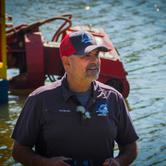How Many Different Kinds of Ponds Are There?
Are you considering adding a pond to your HOA, golf course, backyard, or commercial landscape? If so, there are several different kinds of ponds to choose from. During our twenty-five years of experience in pond dredging and maintenance, we've learned a few things about types of ponds and how to keep them healthy. Below are a few ideas we'd like to share with you.
Fish Pond
Fish ponds are a good choice for both commercial and residential properties. They're aesthetically pleasing and can be a fun source of recreation for the community. The challenge with this type of pond is managing the fish waste. If not properly disposed of, the massive amounts of nutrients created by this waste can harm the fish. A healthy fish pond should have abundant plant life, which helps to absorb the excess fish food and waste. A filter is often required if the body of water is small and can help supplement the natural waste-removal processes. The filter must be cleaned and maintained regularly.
Decorative Pond (No Fish)
Decorative ponds are often found on golf courses and HOA neighborhoods for aesthetics only. Mosquitofish may be added to the pond to help control the mosquito population during the warmer months. These small fish are very hardy, self-sustaining, and don't require any maintenance at all. If there are no mosquitos to eat, they will turn to the zooplankton found throughout the water column.
Koi Pond
A Koi pond is built for people to enjoy the beautiful and colorful Koi fish, which can cost from a few hundred to tens of thousands of dollars or more. A Koi fish is a hybridized carp. They've been kept as pets since the 1800s and bred for color and shape. Koi are hardy fish, which means they can survive the cold winter months, although some owners will add a heater to the pond to ensure the water temps remain comfortable. Koi ponds usually have a small deep end for the fish to escape during warm summer. The rest of the pond is shallow, so people can easily see and enjoy the beautiful colors and shapes of the fish. The pond typically has an artificial bottom; the fish can stir up a muddy bottom, reducing water clarity.
Farm Pond
Farm ponds are ponds created by farmers to hold water for their livestock and crops. They are usually lined with clay-like soil, which prevents water seepage and keeps them full year-round. Sometimes, farm ponds are fed by nearby canals, which are fed by nearby rivers or lakes. Inevitably, gamefish and other aquatic wildlife will take up residence in a farm pond. Crappie, largemouth bass, trout, and catfish will all thrive and multiply. Putting Koi or other slow-moving goldfish in a farm pond is not advised, as other fish can be naturally aggressive and may eat or nip the fins of the more docile ones. Farmers will also add carp to ponds to control native vegetation as they have an insatiable appetite for the delicious green plants.
Mini Pond
Mini ponds are becoming increasingly common in many households in the U.S. As their name suggests, they are smaller than the average pond—sometimes only 3' x 3' in size. Small decorative fish and plants are usually added along with a waterfall or other water-aerating features. The downside to a mini pond is that smaller bodies of water are more challenging to keep healthy. This is especially true when the nitrates and nitrites of a mini pond become too high. A fish or plant die-off can easily occur in a mini pond unless the owner is diligent about checking water parameters and performing necessary water changes regularly.
Nationwide Pond Experts
American Underwater Services is the foremost expert in pond dredging in the U.S. We've been around for over 25 years and have the experience and know-how to dredge any pond, whether small or big. If your pond hasn't been dredged in a while or has experienced nuisance algae outbreaks, call us today at (817) 377-8512 to learn more about our nationwide pond dredging and cleaning services. [author_box]




